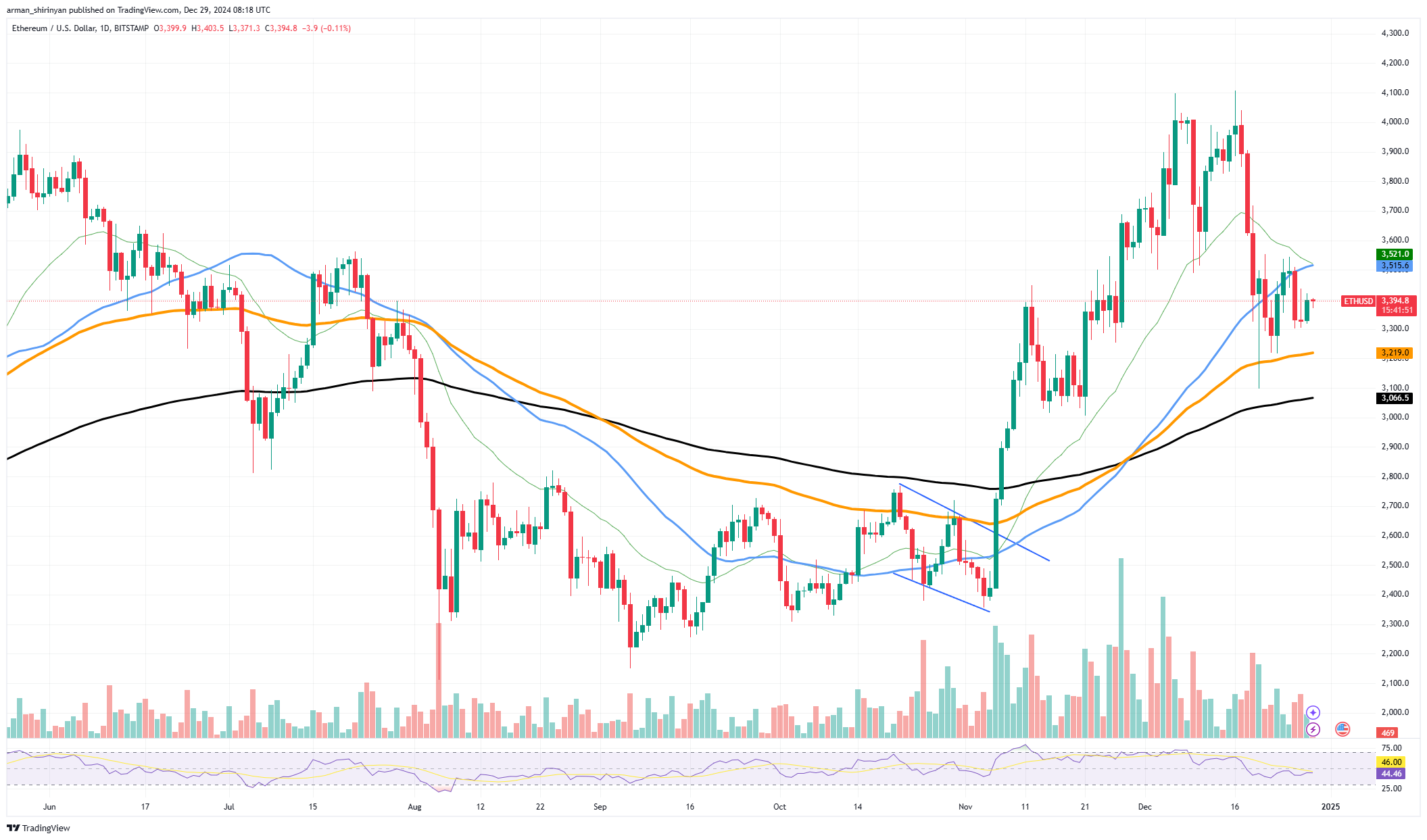The liquidation process for an Ethereum whale that first received 200,000 ETH from the Genesis Block in 2015 is coming to an end. In keeping with a trend of significant sales throughout the year, the whale sent 3,370 ETH (roughly $11.37 million) to Kraken today.
In 2024, 48,687 ETH ($171.78 million) were transferred to Kraken averaging $3,528 per ETH. At the moment the whale only has 7,594 ETH, which is worth between $25 million and $72 million. This action brings to light a pivotal period in Ethereum's development and market dynamics. Early holders' extensive selling activity frequently prompts worries about price suppression brought on by an increase in supply.

The fact that this whale is nearly finished selling though might lessen the short-term downward pressure on Ethereum's price. Ethereum has been moving through a consolidation phase on the price chart after its surge earlier this year. The price is currently trading close to $3,390, just above the crucial support levels that the 200 EMA at $3,006 and the 100 EMA at $3,219 provide.
Relative strength is indicated by prices remaining above these moving averages, which are important gauges of market sentiment. Although the whale's selling activity has resulted in sharp price drops right away, it is consistent with Ethereum's difficulty breaking higher. The market is now susceptible to bearish sentiment due to the lack of volume and momentum, particularly since it has not been able to retest the $4,000 resistance in recent weeks.
The exhaustion of this whale's sell-off may serve as a stabilizing factor for Ethereum in the future, lowering the pressure on the open market to sell. Because breaking below the support levels of $3,219 and $3,000 could indicate a bearish shift, traders should monitor these levels. Regaining $3,528 — the whale's average selling price — could boost investor confidence on the plus side. Ethereum is currently in a precarious position, juggling the possibility of a breakout with additional consolidation as market sentiment and on-chain dynamics change.

